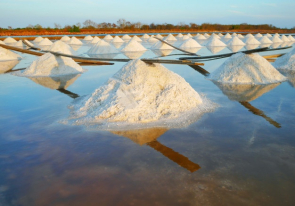Industrial area entrepreneurs asks Prabowo-Gibran to improve local competitiveness
The Indonesian Industrial Estate Association (HKI) is requesting the President and Vice president-elect, Prabowo Subianto-Gibran Rakabuming Raka, to enhance the competitiveness of industrial zones amid increasingly fierce global competition.
HKI chairman, Sanny Iskandar, said that the association would collaborate with the incoming government to enhance the competitiveness of industrial estates domestically. He appreciates the relatively stable presidential election this year.
"Strategic efforts and policies are needed to optimize the role and function of competitive Industrial estates to face increasingly fierce global competition," Sanny said on Saturday, April 27, 2024.
Sanny emphasized that his association would become a government partner in addressing several challenges that may arise in the development and management of industrial estates in the future.
"HKI invites all parties to support these decisions and together support the creation of good political and economic stability, especially in facing current global economic challenges," he said.
Prabowo and Gibran have significant tasks in the first year of their government with a targeted economic growth range of 5.3 - 5.6 percent. Deputy Minister for Economic Affairs at the Ministry of National Development Planning (PPN/Bappenas) Amalia Adininggar revealed several Government Work Plans (RKP) for 2025, where the higher government target is to achieve the Golden Indonesia 2045 vision.
To achieve this, the incoming government needs to realize investments (PMTB) of up to Rp7,400 trillion (US$455.4 billion) to achieve the targeted economic growth. "To achieve a growth rate of 5.3 percent to 5.6 percent, investment of Rp7,329 trillion - Rp7,400 trillion is needed," Amalia said during the 2024 National Development Coordination Meeting (Rakorbangpus) on Thursday, April 18, 2024.
Another task for the new government, Amalia said, is to spur econiomic growth in provinces across the country. Eastern regions of Indonesia is expected to grow faster than the western regions in nan attempt to increase their contribution to the national economy.
In the initial plan for 2025, Amalia cited that Sulawesi would become the economic driving force in the eastern region, especially in the metal and natural commodity industries. "Maluku is focused on downstream industries, mining industry, and also the development of integrated plantation and fisheries areas," Amalia said.
Tag
Already have an account? Sign In
-
Start reading
Freemium
-
Monthly Subscription
30% OFF$26.03
$37.19/MonthCancel anytime
This offer is open to all new subscribers!
Subscribe now -
Yearly Subscription
33% OFF$228.13
$340.5/YearCancel anytime
This offer is open to all new subscribers!
Subscribe now






